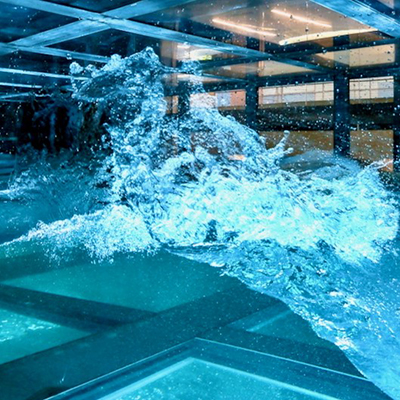
UM researchers used a new approach to study how waves form and increase in windy conditions. They simultaneously measured air pressure, airflow, and water elevation to assess how wave height, wave frequency, and wind force affect the movement of air and the transfer of momentum between the air and the ocean's surface.
The team then used the SUSTAIN wind-wave tank to reconstruct airflow patterns that drive wave growth in strong winds. The approach “reconstructed the two-dimensional profile of pressure and airflow above wavy surfaces.... [which] can help refine numerical wave models by incorporating airflow separation effects,” says Brian Haus. The team found that when airflow separates on the leeward side of waves, traditional models underestimate momentum transfer by more than 30%.
View Related Expert Profiles: Go to Source